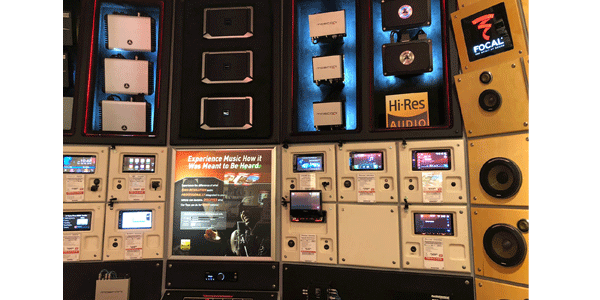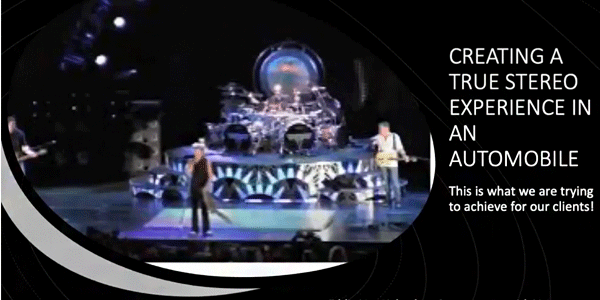Using digital signal processors (DSPs) in many of today’s cars is no longer optional, said Nick Wingate of Orca Design & Mfg. in a webinar last week called “Selling DSP 101.”
New cars, especially in the last 3 years, are sounding better than ever because they have DSP. “If you go back five years and listen to a five-year-old car and something built today, some of these cars today sound amazing. How are we going to make these cars sound better? It’s paramount that we include a DSP processor because it’s the only way we can truly fix things,” he said
A Chevy Cruise to a Mercedes G wagon and everything in between now has some form of DSP, he said.
“I know a lot of [dealers] are scared to death of these things. They don’t understand it; and it uses a computer. It shouldn’t scare them; it’s a tool,” he said.
A car may sound louder with an aftermarket system without DSP, but in many cars, it will only sound okay at best, and may even sound worse than the OEM system, he said. To get it to sound better, requires “de-tuning” the factory sound processing first, and then creating a stereo sweet spot in the car or a “phantom center image.”
It is only through creating this stereo sweet spot that users can hear the equivalent of a live audio performance in the car, and improve the audio system beyond what many factory systems offer today, said Wingate. Following the webinar, he told us, achieving a clean signal from the factory system is not enough.

To get an audio system to sound better requires being able to hear “the individual instruments, the individual people; layers, which is depth of stage. You hear that the drum kit is behind the singer. This is all part of the experience of music. That’s what we’re attempting to recreate in a car,” Wingate said.
The DSP solves 3 problems in the car, he said:
First, correct the arrival times of the audio, as one speaker is closer to you and one is further away. If you don’t correct it you get a time delay, and can’t have true stereo.
Second, correct the dispersion pattern of each speaker in different locations; that’s where the crossover and equalization come into play.
Third, correct how loud each speaker is in relationship to where the phantom center image will be located.
But How Do You Actually Sell DSP?
50-store chain Car Toys demonstrates DSP in sound rooms in many of its stores that show a system with DSP, and then with the DSP turned off.
Jeremy Boyd, Car Toys Director of High End Audio, joined the webinar stating that selling DSP is about mastering the art of the demo in a sound room. “Allow the product to sell itself rather than overthinking this. Teach a customer to hear the staging; the imaging.” He demos a DSP system using three tracks: one is Johnny Cash “Hurt.” He tells people to listen for the center image of the voice. The second is a live Slipknot drum solo, which has a big sound stage, “everything up high,” and the third is whatever the customer listens to. “Now they will listen to it the same way you taught them to. Immediately, at that point, they want to figure out what product you are selling,” Boyd said.
Boyd said you can’t start the sale with speakers, you should start with what’s required to make those speakers work.
“I couldn’t agree with you more,” said Wingate. “Sell the DSP first, and then go through the budget and choose your speakers.”
Boyd said, “We use DSP with the factory speakers to get a customer started…We have to reverse their thinking. Sell the DSP and the amplifier first.”
The DSP basically replaces the head unit. “Let’s face it. Everybody in the last 10 years, has gotten used to paying $1,500 for a double DIN in-dash with navigation. Humans are visual creatures. They can see the 8-inch screen. But the DSP is hidden. They can’t see it constantly. If you can demo what the box does, then they can justify it, and they say, ‘I need this,’” said Wingate.
Todd Ramsey of Ramsey Consulting Group added, “Even if you are not installing DSP on a regular basis, download the software and open it up in offline mode and get familiar with what the buttons and screens look like. You may find you develop some questions you may want to ask before you’re in the weeds.”
Top photo: Eddie Van Halen’s last live concert via Nick Wingate and Orca Design & Mfg.








Really, the problem is that the box contains a bunch of functionality of which the knowledge base is incredibly limited. Equalizers. Crossovers. Time alignment. Summation. Normalization. Foreign to many in 2020.
Those of us who grew up as both audio and car audio super enthusiasts understood the technology which was available to us as well as the various products offered. We chose product lines based on how closely their product offering mirrored our goals. Octave, third-octave, parametric, quasi-parametric, Q, boost, cut, slope, bandwidth, gain, etc . . . all terminology we were absolutely fluent in. That empowered us to know which products to select and how to employ them to achieve the desired results when designing systems. In addition, many of us knew our craft so well that we had thousands of dollars in specialized tools to leverage the power these (analog) devices offered.
For nearly 15 years now the industry has offered all of the functionality (and more) in a single box. Manufacturers have gone out of their way to make it easy for technicians to achieve the desired results. Unfortunately, this is nearly a repeat of the Clifford autofax service launched in the early ’90s – the moment that was launched, technicians put down their Fluke 87s and went off what was printed on the sheet. Some of us predicted that.
Find me a technician with a copy of the Loudspeaker Design Cookbook and that shop has some hope with DSP. Otherwise, how does one sell a product with so much voodoo?
yeah, and setting up the fader and balance goes a long way too!